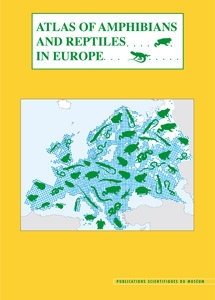
 Volume 29
Volume 29 Published on 30 December 2004
The publication, in 1997, of an Atlas of Amphibians and Reptiles in Europe was the culmination of an unprecedented effort to accurately map the distribution of Europe’s 62 amphibian and 123 reptile species occurring west of the Urals. Work on the Atlas began at the initiative of the Societas Europaea Herpetologica (SEH) in 1983, when its Mapping Committee was created. Under the supervision of the Committee, the Muséum national d’Histoire naturelle (Paris, France) coordinated the methodological, technical and scientific aspects and was entrusted with the publication of the Atlas. The data were collected by numerous enthusiastic specialists, both professionals and volunteers, and collated by a network of national coordinators, resulting in a database of 85 067 records. Each species is represented in the Atlas by a 50x50 km UTM grid distribution map, together with notes on its taxonomy, distribution, population status and conservation problems. These are supplemented by a bibliography containing more than 1 300 entries. Information on the extinction or introduction of certain species is also highlighted on the maps. The present volume is a second edition of the Atlas, with a review of the taxonomic and nomenclatural changes that have occurred during the last 10 years. The Societas Europaea Herpetologica recognizes that it has also become necessary to revise and update the maps themselves. However, this is a project that will take several years and, in the meantime, the information in the maps of the first edition remains the best available. The Atlas of Amphibians and Reptiles in Europe will be of immense value to researchers, managers and conservationists alike. It will no doubt be used for national and global Red Data Books and for defining the responsibility of each State where the herpetological heritage is concerned.
